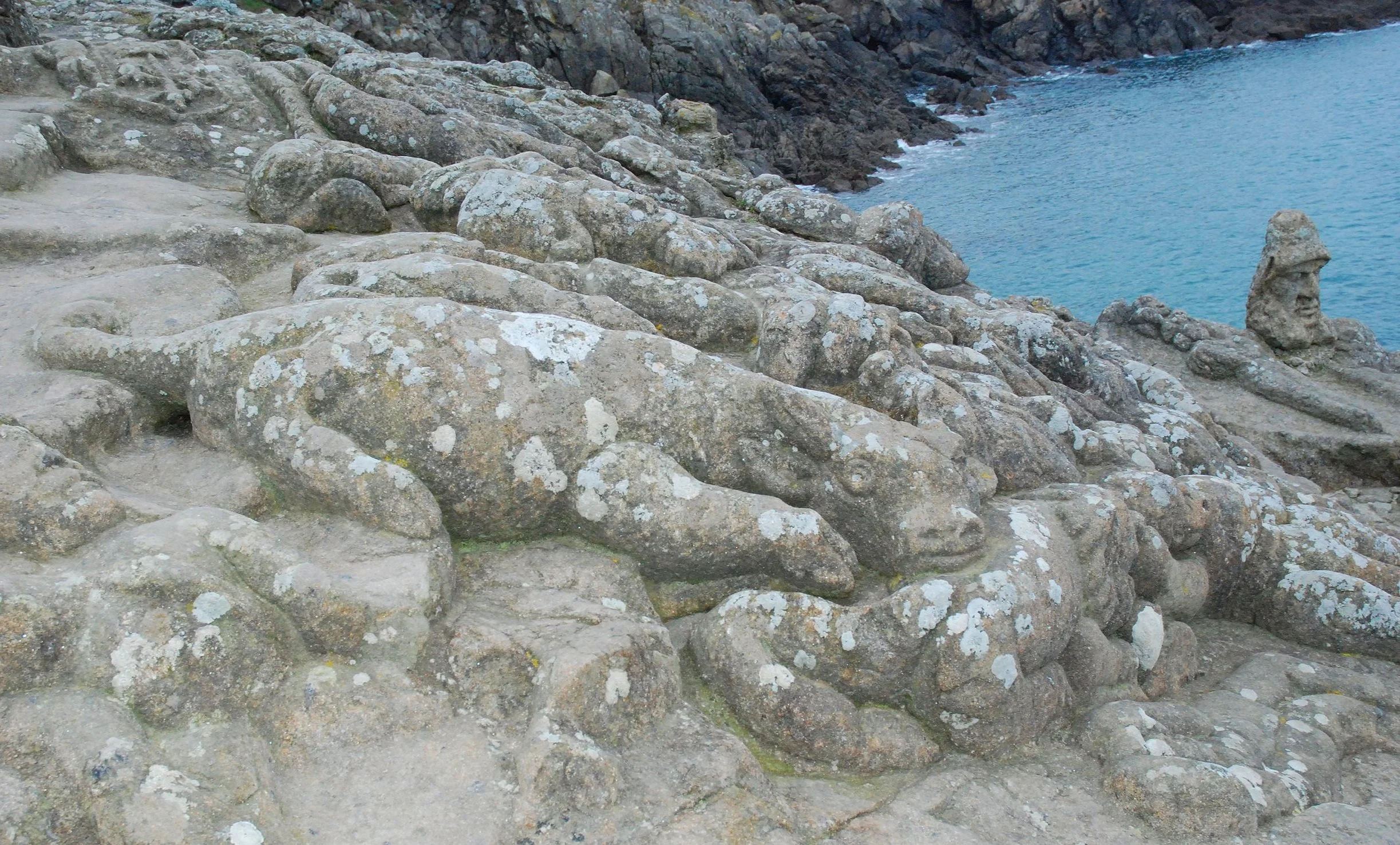The sculpted rocks of Rothéneuf, located between Saint-Malo and Cancale, are some of the better-known and most surprising art brut sculptures in France. They were created between 1894 and 1907 by Father Adolphe Julien Fouéré, known locally as Father Fouré (1839–1910).
Father Fouré served as the rector of parishes in Paimpont, Guipry, Forges-la-Forêt, Maxent, and finally at Langouët where, in 1894, he was forced to step down despite a petition from his parishioners requesting he be allowed to remain. He subsequently retired to Rothéneuf, a short distance from Saint-Malo, where he served as a simple parish priest and began work on a monumental sculpture that he carved directly into the coast’s granite rock. His sculpted figures were originally polychrome and ranged from bas-relief to totally exposed faces. For over thirteen years, from the end of 1894 to 1907, he also sculpted more than 300 statues, including a number of wooden figures. His home/atelier became known variously as ”Haute Folie,” ”Hermitage de Rothéneuf,” and ”House of the Hermit.” It soon became known simply as the ”The Wood Museum.” In 1907, suffering from paralysis and speech difficulties, Father Fouré was forced to abandon his work. Old photographs show him resting in his armchair inside the house where he died on February 10, 1910. He is buried in the cemetery at Rothéneuf.


